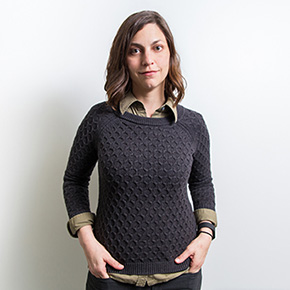First, my grandpa would lose his keys. That’s pretty normal. Then came the more telling signs – getting lost in hallways and in conversations. Then he washed important documents that had been kept in the dishwasher. That really upset my grandma, who assumed the papers were safe there since he hadn’t used the dishwasher in decades. Then he lost his penis – not literally, of course, but he couldn’t find it and continued to ask of its whereabouts, and that really upset him.
It was awful to witness a strong, gentle man lose his way at an age where he had so much left to give.
As we mark National Alzheimer’s Day today, about 5.5 million Americans are living with Alzheimer’s disease or related dementia. Some of them are just starting to lose their keys; others have already lost everything, including themselves.
“If a foreign power attempted to carry out this kind of assault on the intellectual capabilities of 5 million Americans, we would consider it an all-out attack – an act of war.” That’s the sentiment, my colleagues, Ron Sachs and Jon Peck conveyed after meeting with my father, who now has early-stage Alzheimer’s himself.
There is, in fact, a concerted counterattack on Alzheimer’s brewing, but it has been slow to come together. In 2013, the National Institutes of Health (NIH) dedicated $504 million toward dementia research – a tiny drop in a massive budget. That year, Alzheimer’s was already the sixth leading cause of death in the United States, costing Medicare alone more than $100 billion per year.
Today, following substantial advocacy by state and national leaders, the research budget for Alzheimer’s has almost tripled, with $1.4 billion in NIH funds directed toward studying it this year.
Is that enough? What can we expect to see as a result of this investment?
Toward the first question – “Is it enough?” – it’s hard to say. The only way I can even make a reasonable guess is to compare this funding to what the NIH spends on other illnesses. The U.S. currently invests more than $10 billion on cancer research, $7 billion on cardiovascular and heart conditions, and $3 billion on HIV/AIDS.
This doesn’t exactly match how prevalent these diseases are: looking at funding relative to disease incidence, the NIH spends about $80,000 in research funds for every new case of HIV/AIDS, $6,000 for every new diagnosis of cancer, $6,000 for every new diagnosis of heart disease – and $3,000 for every new diagnosis of dementia.
We could also consider how much is spent on research funding relative to what each of these diseases “costs” in terms of Medicare expenditures. In those terms, 32 cents is spent on HIV/AIDS research for every $1 spent by Medicare; 35 cents is spent on cancer research for every $1 spent by Medicare on cancer care; 6 cents on heart disease; and only 1 cent on Alzheimer’s.
There’s a silver lining in all these numbers, however, which brings me to the second question: “What can we expect to see as a result of this investment?”
Research funding has absolutely made a difference in treatments and mortality rates for other diseases.
Indeed, between 2000 and 2014, mortality rates for cancers have declined by about 5%, mortality rates for heart diseases have declined by about 18%, and mortality rates for HIV/AIDS have decreased by 54%. During this same time, mortality rates for Alzheimer’s disease went in the other direction, rising by a dramatic 89%.
Research attention on cancer, heart disease, and HIV/AIDS has resulted in dramatic shifts in treatment options and outcomes for millions. We can expect that with an influx of focused and well-managed Alzheimer’s research dollars, viable options will arise for this terror, too.
That’s the hope, at least, and there are scores of scientists up to the task. Today, on National Alzheimer’s Day, we can contribute to their efforts by sharing our stories and inspiring others to speak up, too.
In 1996, it felt like there was nothing we could do to help my grandpa, aside from caring; giving care. My dad would sit with him every morning, bringing donuts – the only thing he would willingly eat. I was just a teenager and didn’t fully understand the value of providing care, or the sacrifices that go with it. I also didn’t know that we were so very far from alone in dealing with this diabolical disease.
Last year, nearly 16 million Americans provided 18 billion hours of unpaid caregiving to family members or friends with dementia.
If every one of these family members shared their story, imagine the groundswell of moral and literal support for our counterattack. Imagine the futures and memories that may not have to be lost.

